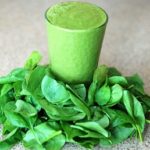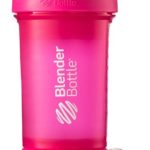I am a big fan of using natural materials when possible. That means using a glass water bottle, and glass juice bottles. However, it becomes a bit tricky when you look into blenders.
Glass blender jars, while widely sold online and in big box stores, are not without inherent risks that you should be aware of.
What I wanted to do in this piece was to cover a number of the risks that come with using a glass blender.
But I’ll also point out some of the benefits that people highlight when it comes to glass blenders: because there are benefits, and there are legitimate reasons why people use glass blenders.
Glass Breaks- Plastic Doesn’t
One of the primary concerns with glass blender jars is that they can break—or more precisely they can shatter.
The most common two reasons for a glass blender to break is if you drop it or if you use really hot liquid.
Now, some blenders are made of glass and they are rated to be used with hot liquids (I have a whole write up about them here). So, if you use really hot water—boiling, for instance, then yes glass blenders can break.
Also, people drop blenders and if you have a glass blender it can break. A plastic blender can also break, but it’s not as dangerous when it shatters—and the replacement blending jar is not expensive.
Finally, another thing to consider is that a glass blender can shatter if you accidently drop a piece of metal into the blending jar. This might break plastic, but more often than not it would scratch the blender.
You want to avoid accidently dropping anything into your blender that could break it (metal silverware being the number one problem) and also try not to drop the blender jar on the floor. But if you do happen to make a mistake, it’s less problematic if you’re using a plastic blender jar.
Cleaning and Storage Is Harder
You can be pretty rough when cleaning a plastic blender jar. It’s not delicate, and in most cases they are dishwasher safe.
Glass blender jars on the other hand tend to be older and less durable than the modern plastic blender jars.
You see, originally blender jars were made of glass. So if you’re using a glass blender it is likely an old one.
There might not be anything wrong with it, and as long as you use it carefully and don’t drop it or clean it improperly it will be fine.
Many people like glass blenders because they don’t have the bad chemicals that plastic blenders do.
For instance, if you are blending hot tomato soup and you have a glass blender that can handle that (be careful about the steam causing pressure) then you don’t have to worry about the plastic that can leach out.
However, when it comes time to wash and dry the glass blender, you are going to run into a more tricky situation. The blender needs to be dried and placed carefully, if it falls over on a marble countertop it could crack.
One area where I do think that glass blenders or stainless steel blender jars are superior to plastic jars is when you use an abrasive cleaning too such as Brillo. If you are using Brillo on plastic, you need to be careful. Plastic can scratch much easier than glass.
Why Would Someone Choose a Glass Blender Over a Plastic Blender?
It depends on what the person’s concerns are. If you are someone who is concerned about the negative health effects of plastic, and you’re careful about how you clean and store your blender, then a glass model might be a good option.
I wrote a previous article about this which you can find here.
However, if you’re a casual user and are not going to be dillkigent about cleaning and storing your blender, and especially if you have a marble or tile kitchen floor, then a glass blender jar can be risky to use.
Related Posts

Hi Everyone!
Jenny O’Brien here. Nutritionist & personal trainer. Just your average vegetarian and smoothie fanatic!
If you have any questions, or you’d like me to cover a particular topic, drop me a line and let me know!
Thanks!





